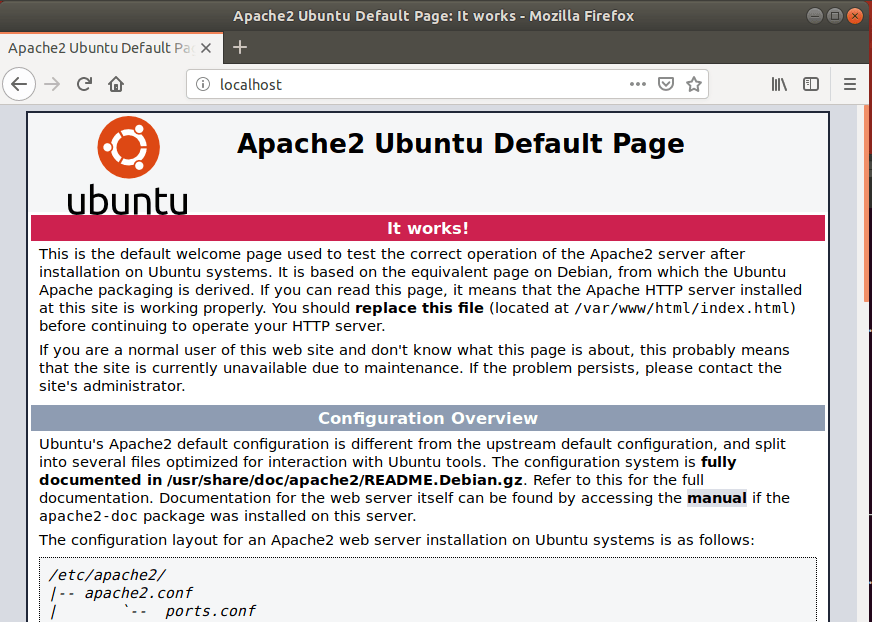Gibbon LMS is a free, open-source platform created by teachers to solve problems teachers face every day in the classroom, allowing seamless planning, teaching, and assessment. Teachers can use this Gibbon to create powerful sets of tools to help students learn via a user-friendly and responsive interface where students can follow each course via any device. This LMS platform is robust, mobile-friendly, and responsive out-of-the-box so your students can enjoy reading and interact with your courses from multiple devices anywhere. For more about Gibbon LMS, please check their Homepage To get started with installing Gibbon LMS, follow the steps below:
Install Apache2 HTTP Server
You will need a web server to run Gibbon LMS and Apache2 HTTP server is the most popular open-source web server available today. So go and get it for Gibbon LMS. To install the Apache2 server, run the commands below: After installing the Apache2 webserver, the commands below can be used to stop, start and enable the Apache2 service to always start up with the server boots. Now that Apache2 is installed. to test whether the web server is working, open your browser and browse to the URL below. If you see the page above, then Apache2 is successfully installed.
Install MariaDB Database Server
Gibbon LMS also needs a database server to store its content. and MariaDB database server is a great place to start when looking at open-source database servers to use with Gibbon LMS. To install MariaDB run the commands below. After installing MariaDB, the commands below can be used to stop, start and enable the MariaDB service always to start up when the server boots. Run these on Ubuntu After that, run the commands below to secure the MariaDB server by creating a root password and disallowing remote root access. When prompted, answer the questions below by following the guide.
Enter current password for root (enter for none): Just press the Enter Set root password? [Y/n]: Y New password: Enter password Re-enter new password: Repeat password Remove anonymous users? [Y/n]: Y Disallow root login remotely? [Y/n]: Y Remove test database and access to it? [Y/n]: Y Reload privilege tables now? [Y/n]: Y
Restart MariaDB server To test if MariaDB is installed, type the commands below to logon into the MariaDB server Then type the password you created above to sign on. if successful, you should see MariaDB welcome message
Install PHP 7.2 and Related Modules
Gibbon LMS is a PHP-based CMS and PHP is required. However, PHP 7.2 may not be available in Ubuntu’s default repositories. To run PHP 7.2 on Ubuntu 16.04 and previous, you may need to run the commands below: Then update and upgrade to PHP 7.2 Next, run the commands below to install PHP 7.2 and related modules. After installing PHP 7.2, run the commands below to open the PHP default configuration file for Apache2. The lines below are a good setting for most PHP-based CMS. Update the configuration file with these and save. Every time you make changes to the PHP configuration file, you should also restart the Apache2 web server. To do so, run the commands below: Now that PHP is installed, to test whether it’s functioning, create a test file called phpinfo.php in the Apache2 default root directory. ( /var/www/html/) Then type the content below and save the file. Next, open your browser and browse to the server’s hostname or IP address followed by phpinfo.php You should see the PHP default test page.
Create Gibbon LMS Database
Now that you’ve installed all the packages that are required, continue below to start configuring the servers. First, create a Gibbon LMS database. Run the commands below to log on to MariaDB. When prompted for a password, type the root password you created above. Then create a database called gibbon Create a database user called gibbonuser with a new password Then grant the user full access to the gibbon database. Finally, save your changes and exit.
Download Gibbon LMS Latest Release
After installing the server and packages above, go and get the latest copy of Gibbon LMS from its download site. After downloading, use the commands below to extract the archived content into the Apache2 root directory. Then run the commands below to set the correct permissions for the Gibbon LMS root directory and give Apache2 control.
Configure Apache2
Finally, configure the Apahce2 site configuration file for Gibbon LMS. This file will control how users access Gibbon LMS content. Run the commands below to create a new configuration file called gibbon.conf Then copy and paste the content below into the file and save it. Replace the highlighted line with your domain name and directory root location. Save the file and exit.
Enable the Gibbon LMS and Rewrite Module
After configuring the VirtualHost above, enable it by running the commands below Then open your browser and browse to the server domain name. You should see the Gibbon LMS setup wizard complete. Before you can continue with the installation wizard, validate that all requirements are met. Next, type in the database name, username, and password and optionally add the demo data and continue. After that create an admin account and set your school profile and complete the setup. That’s it! Enjoy~ Congratulation! You have successfully installed Gibbon LMS on Ubuntu 16.04 | 18.04 You may also like the post below:



